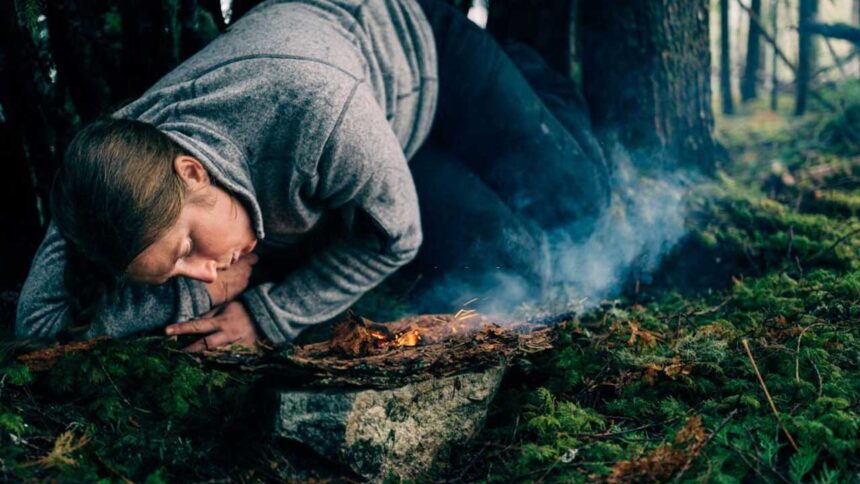There are regions of our planet that are particularly hostile to the survival of the human being. Knowing how to build a survival shelter to protect ourselves from these extreme conditions and the environmental dangers in these places is essential to survive. Read on and find out how the professionals work.
How to make a shelter in the jungle
Due to the abundance of insects, everyone about to cross a jungle should include a mosquito net in their luggage. A hammock is light and insulated from the ground. If we don’t have it, maybe we have material to improvise it (parachute cloth, a blanket, etc…). A roof over our hammock or bed will protect us from the rain.
Shelter with A-shaped branch support.
We have already seen it. The shelter with A-shaped branch support is very suitable to protect us from the rain.
Platform with mosquito net.
This shelter isolates us from the ground and protects us from insects. If a roof is added, it will also protect us from the rain. The bed will be covered with palm leaves or other plant matter.
Wilderness Survival Shelters
The function of the shelter in the desert is to protect us from the sun and heat. Other essential factors are sandstorms and sometimes cold night temperatures.
It is recommended to bury it in the sand to minimize water loss and protect it from the sun. We can also cover ourselves with a parachute cloth if we have it.
To build a shelter or move, choose the most incredible hours of the day, at sunrise or sunset.
The temperature is usually several degrees lower, a few centimeters below the ground, so we will dig a hole that we will cover with a cloth or the material that offers us shade.
How to make a shelter for cold areas
When the cold approach extreme values, shelter becomes the element on which our survival will depend, and its construction becomes the main priority.
We must not forget that the wind aggravates the adverse effects of the cold.
The fundamental purpose of sheltering in cold areas is to retain our heat and that produced by other sources of heat that we can use. For this, it is necessary that there are no drafts and that the shelter is not too large. A small cover is warmer and requires less work than a large one.
Snow cave.
After the igloo, it is probably the best shelter for cold areas. It would be best to have a shovel or improvised utensil (a plate, a stick) to dig where snow is piled. A small cave should be explored (the more significant, the more challenging to heat) with a bed about 40 cm above ground level, and if desired, we can also add a cooking platform with a stove 30 cm higher. We must not forget to make a ventilation hole at the top and another in the block of ice or compacted snow that serves as a door. The shovel should be kept inside if it is necessary to go out in the morning. We will make the temperature rise several degrees by lighting a simple candle inside this shelter,
Trench.
If there is not enough snow to dig a cave, a trench can be made and covered with packed snow blocks or whatever material is on hand.
Shed.
We saw it before. In areas with little snow, and abundant wood, we can build a classic shed with the sloped side pointing toward the wind. We will make a fire and place a reflector made of logs or stones that reflects the heat toward us.
Igloo.
It is the best shelter against the cold. However, it requires prior learning of the technique, tools (at least a knife), and several people. It is only worth the effort if we spend much time in that place.










